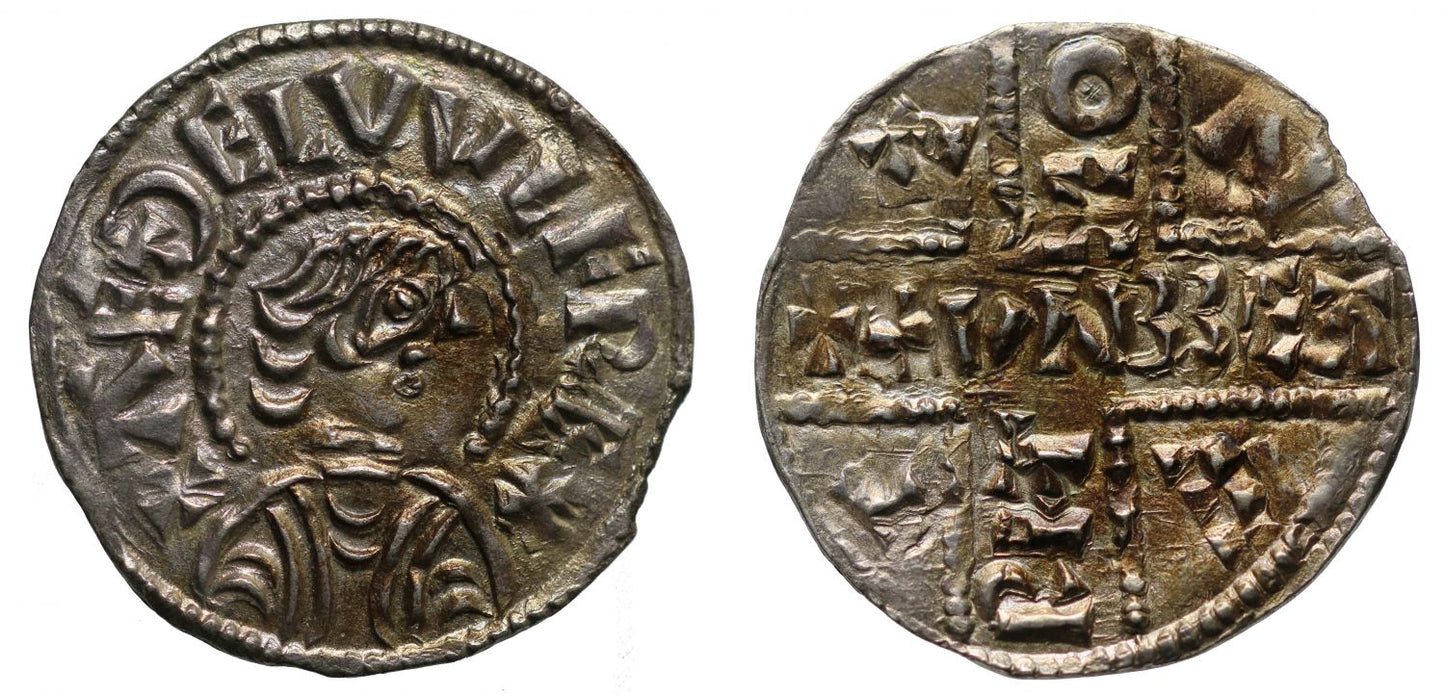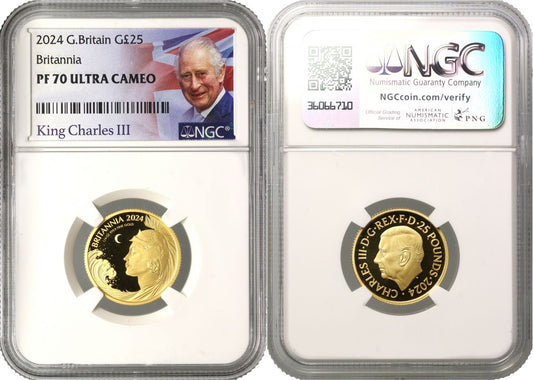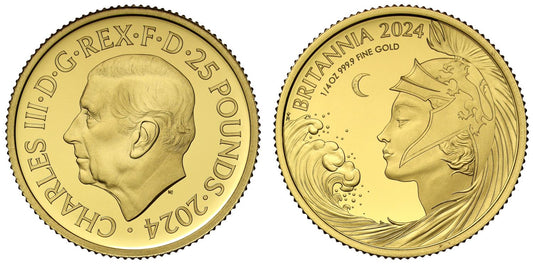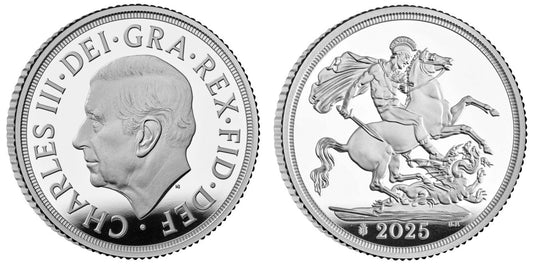FAQs
What makes a coin valuable?
I have coins to sell, what’s the next step?
How will my purchases be shipped?
What happens if I’m not entirely happy with my purchase?
Aethelwulf, King of Wessex, Penny, Canterbury Mint, moneyer Hunbeorht
Kings of Wessex, Aethelwulf (839-858), silver Penny, phase IV, Canterbury mint, moneyer Hunbeorht, bust with wavy hair right with shoulders to bottom of coin, head within inner beaded circle, legend and outer beaded circle surrounding, legend commences lower left, +ΛEDELVVLF REX., rev. name of moneyer arranged on and around beaded cross, +HVNBBEA/RHT/MO/N/E/T/Λ, the HT ligatured, weight 1.26g (BMC 70; Naismith C144; SCBI 9:236 Oxford; N.618; S.1051). Attractively toned with some underlying brightness, one small rim chip, otherwise extremely fine with a pleasing portrait.
We note Naismith writing in 2011 recorded 13 examples of this moneyer for this King of which this coin is a new addition.
Aethelwulf was the Father of King Alfred the Great, and he was the son of King Ecgberht of Wessex a descendent of Ine's brother. Aethelwulf's mother was Redburga supposedly a daughter of Charlemagne and if so probably illegitimate. He was an adult by the time his Father defeated the Mercians in 825 and Aethelwulf was appointed to rule over Kent, Sussex and Essex from 825-839. He succeeded his Father around July 839 as King of Wessex and passed the Kentish sub-rule to his relative Aethelstan who might have been his son or brother, he had either four or five sons. Aethelwulf instilled some stability to the kingdom as he preferred alliance to conquest annexing Berkshire in the 840s and later marrying his daughter Aethelswyth to Burgred of Mercia at Easter 853. A joint expedition with Burgred against Powys led to their King Cyngen fleeing to Rome. Aethelwulf's reign was the first to suffer Viking raids along the south coastal area from 840 at Southampton a Wessex victory, to the largest raid so far in 851 culminating in the Battle of Aclea (thought to be Ockley in Surrey) where there was "great slaughter" of the Scandanavians.
Aethelwulf had sent his son Alfred to study in Rome in 853 and followed on himself in 855 dedicating a tenth of his lands to God. He appointed his son Aethelbald to rule the western areas and son Aethelberht to rule Kent whilst he spent a year in Rome as a guest of Pope Benedict, and visited Francia on the journey back marrying Judith the young daughter of Charles the Bald as his new Queen, a title unused for the King's consort since 800. This Royal title was a threat to his own sons from his earlier marriage and Aethelbald backed by the Bishop of Sherbourne refused to let his Father visit his Kingdom. Aethelwulf failed to muster enough support to be King as he had been previously, and was only accepted back by his son Aethelberht in Kent who let him co-rule the kingdom for the rest of his days dying on 13th January 858 probably at Steyning in West Sussex. His personal property was inherited by his sons as a unit to eventually be left to the final survivor who turned out to be Alfred, who later had his Father's body interred at Winchester. Aethelwulf's son Aethelbald subsequently married his step-mother Judith.
The obverse legend translates as "Aethelwulf King" and the reverse "Hunbeorht moneyer".
Provenance:
Ex Dr John Tooze Collection, Dix Noonan and Webb, Auction 163, 19th September 2019, lot 1011.
Ex Collection of an English Doctor, part one, Sovereign Rarities, London, March 2022.
FAQs
What makes a coin valuable?
I have coins to sell, what’s the next step?
How will my purchases be shipped?
What happens if I’m not entirely happy with my purchase?













